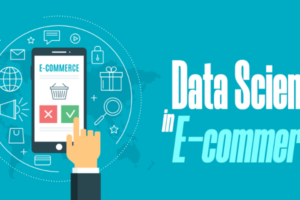
The National Payments Corporation of India (NPCI) plays a crucial role in the country’s digital payment and financial infrastructure. NPCI offers several payment systems like UPI, RuPay, IMPS, NACH, Bharat BillPay etc. that enable digital transactions. With the rising preference for digital payments, NPCI provides the ability to link multiple bank accounts to payment apps for seamless money transfers. But how many accounts can you link to NPCI? Let’s find out.
What is NPCI?
NPCI, an abbreviation for the National Payments Corporation of India, functions like a protective shelter during a financial downpour. Established in 2008, it represents a collaborative effort between the Reserve Bank of India and the Indian Banks Association. But here’s the intriguing twist – it’s not driven by profit motives! Yes, NPCI operates as a non-profit organization, officially registered under Section 8 of the Companies Act in 2013.
So, what’s NPCI’s core mission? Well, it revolves around simplifying, cost-effectiveness, and ensuring utmost security in digital payments. They are the masterminds operating behind the curtains, diligently crafting ingenious ways for us to make payments using our smartphones and computers. In essence, NPCI is the unsung hero working behind the scenes to ensure seamless and hassle-free payment experiences.
How Many Account Can Be Linked To NPCI ?
As per NPCI guidelines, you can link up to 10 bank accounts to their various payment apps and platforms like BHIM, Paytm, PhonePe, Google Pay etc. However, only one of these linked bank accounts can be set as the primary account at any given point of time.
Also, to link these bank account, it is mandatory to first do NPCI Adhaar link bank account. The primary account is used by default for all outgoing payments when initiated directly through the payment app interface. Therefore, while multiple accounts can be linked for seamless transactions, one must be set as the main account.
NPCI Payment Systems
Some key payment systems launched and operated by NPCI include:
- Unified Payments Interface (UPI) – platform for mobile-based instant fund transfers
- RuPay – domestic card payment network
- Immediate Payment Service (IMPS) – 24×7 electronic funds transfer service
- National Automated Clearing House (NACH) – centralised system for bank-to-bank transactions
- Bharat BillPay – one-stop payment platform for all bills
- BHIM – UPI-based mobile app to facilitate easy payments
Benefits of Linking Accounts to NPCI
Linking your bank accounts to NPCI payment systems and apps offers various advantages like:
- Make instant transfers to anyone at anytime
- Consolidate payments through a single app
- Avoid revealing account details for money transfers
- Manage and transfer funds between accounts easily
- Avail offers, cashbacks and rewards on transactions
- Safe and secure digital payments across platforms
- Limit on Number of Accounts That Can Be Linked
- As per NPCI guidelines, you can link up to 10 bank accounts to their payment apps like BHIM, Paytm, PhonePe, Google Pay etc. Do note that only one bank account can be set as the primary account at any point of time. You have to set the account that will be used most frequently as the default primary account.
The primary account is used by default for all outgoing payments when initiated directly through the payment app interface. For money transfers initiated from a bank account using UPI, the respective bank account is used as the default source of funds. If you have bank account linked with NPCI, you can easily get up to 50000 rupees loan urgently without any hustle.
How to Add Multiple Bank Accounts to NPCI Platforms?
Follow these simple steps to add multiple bank accounts to payment apps powered by NPCI:
- Install any UPI payment app like BHIM, Google Pay, PhonePe etc on your smartphone
- Complete the app registration process with your details
- Set up a UPI PIN for authorizing transactions
- Tap on the Bank Accounts section in the app menu
- Choose your bank, enter account details and validate with OTP
- Repeat process to add up to 9 more bank accounts
- Reorder accounts if needed and set any one as the primary account
- With multiple accounts linked, you can now seamlessly transfer money between your own accounts or pay others without hassles.
Tips for Managing Multiple Linked Accounts
Here are some tips to manage multiple linked accounts efficiently:
- Name accounts meaningfully for easy identification
- Frequently check balances of all accounts
- Use scheduled transfers to move fixed sums between accounts
- Set transaction alerts for all accounts to monitor activities
- Limit accounts linked to only most essential ones
- Disable inactive accounts if not being used frequently
- Keep payment apps locked and ensure account safety
In summary, while NPCI enables linking of up to 10 bank accounts, only one can be set as the primary account at a time. Linking multiple accounts makes digital payments super convenient. Follow the steps properly when adding accounts and manage them smartly.
Conclusion
The National Payments Corporation of India (NPCI) provides people with the convenience of connecting numerous bank accounts to their platform. While there isn’t a strict cap on the quantity of bank accounts you can link to NPCI, it’s crucial to ensure that all the linked accounts adhere to NPCI’s rules and regulations.
This adaptability in linking accounts empowers users to efficiently manage their finances, enabling smooth digital transactions and payments. Whether you are a frequent user of digital banking or require multiple accounts for various purposes, NPCI’s capacity to accommodate numerous accounts enhances your financial flexibility and accessibility.





